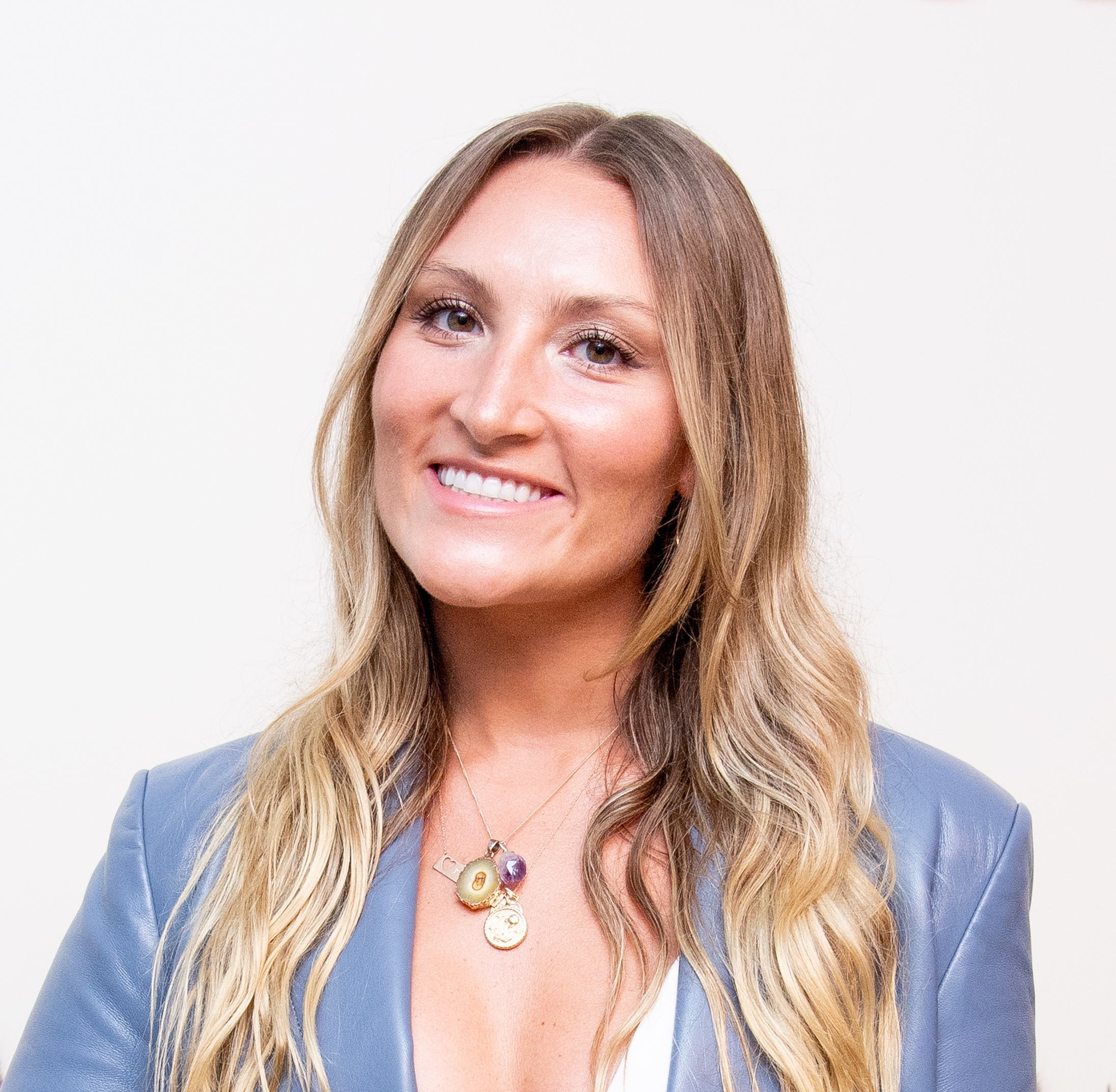
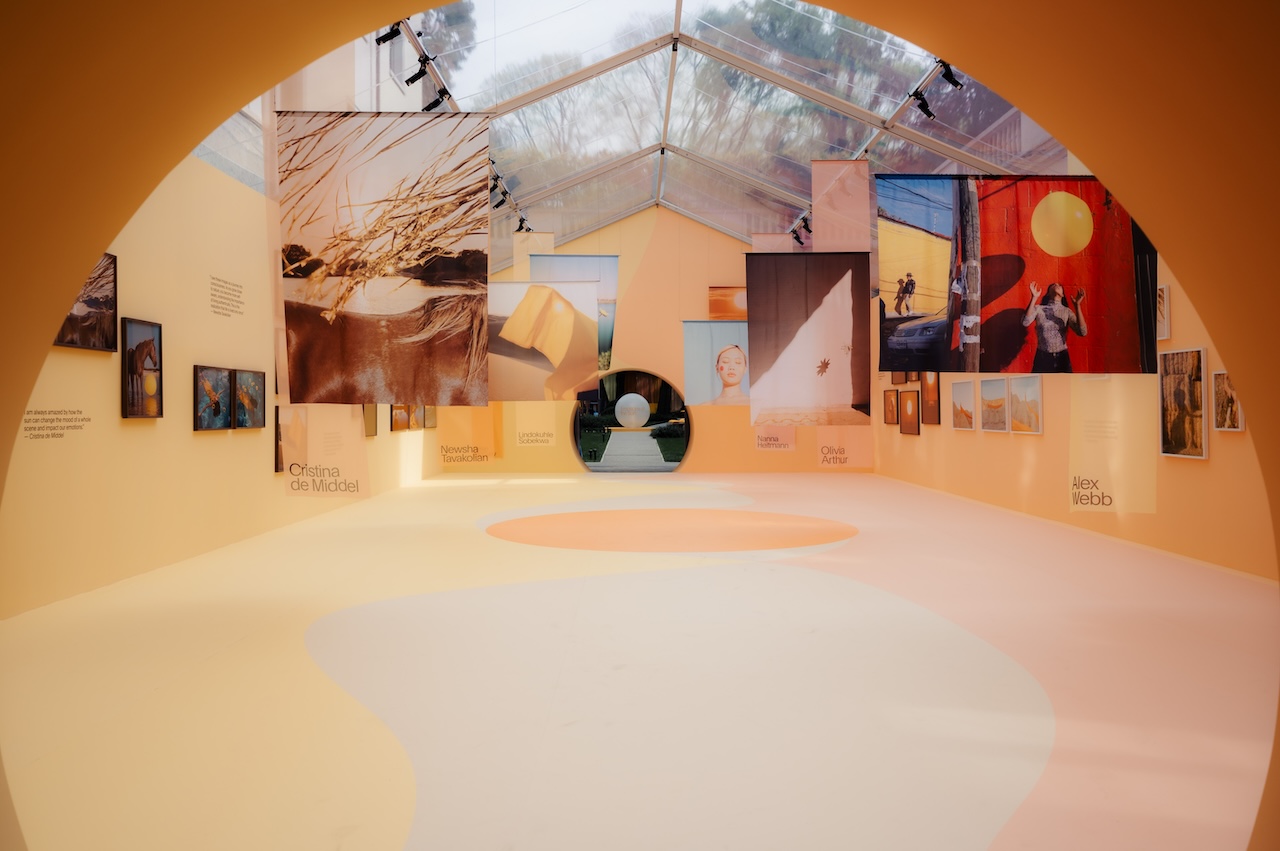
Veuve Clicquot, the name synonymous with audacious spirit and the iconic yellow label, recently embarked on a groundbreaking artistic adventure. Emotions of the Sun — a captivating exhibition that premiered in Milan, Italy, during Milan Design Week — marked a new chapter in the brand’s legacy. This collaboration with the prestigious Magnum Photos agency transcended the boundaries of traditional advertising, creating a multi-sensory experience that captured the essence of Veuve Clicquot: optimism, audacity, and the joy of living in the moment.
A Legacy of Pioneering Spirit: Madame Clicquot’s Enduring Influence
Stepping into the world of Veuve Clicquot is akin to stepping into a story of unwavering innovation and audacity. Interviews with representatives of the house, like CEO Jean-Marc Gallot, paint a vivid picture of the brand’s remarkable journey in an exclusive conversation with GRAZIA USA.
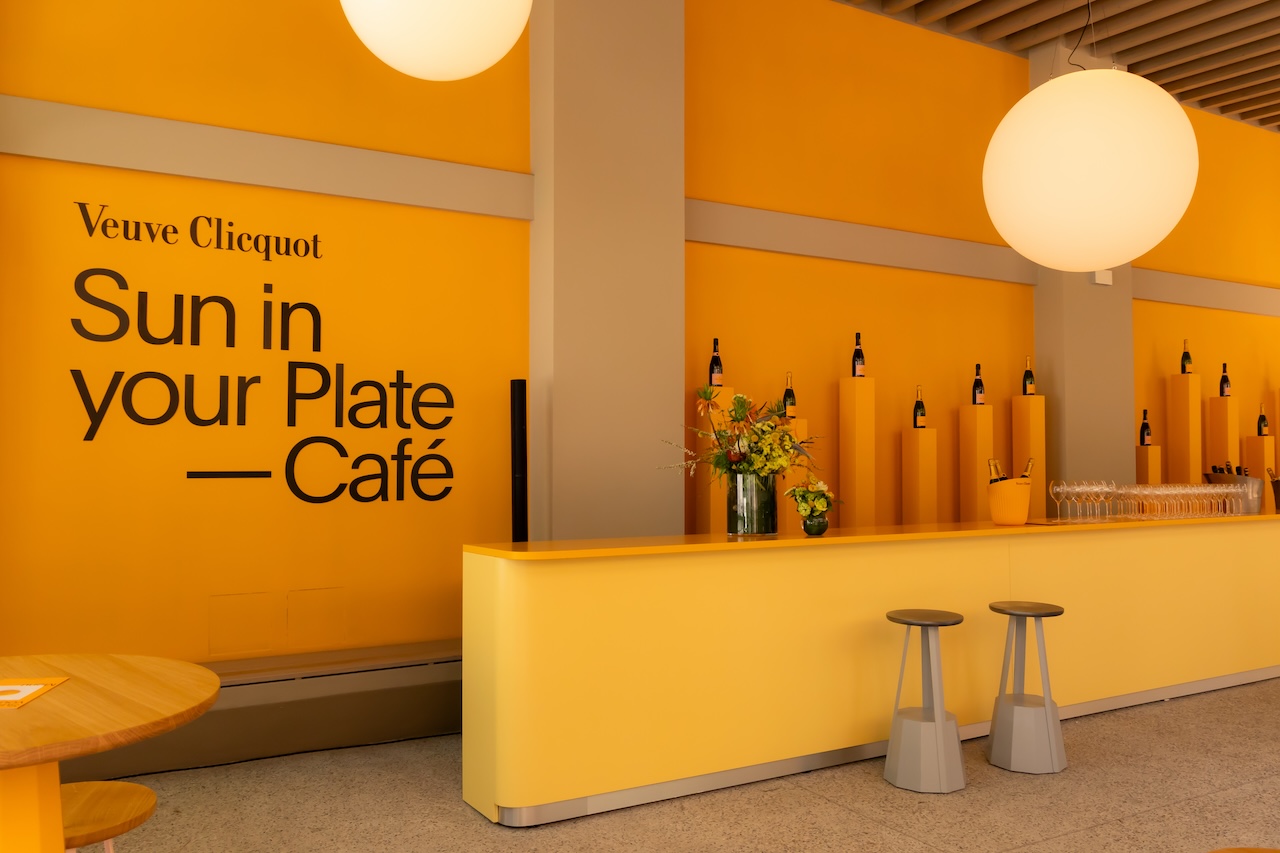
“We have been, in the last 40 years, working with incredible designers in the history of Veuve Clicquot,” Gallot shares with us during the opening of their Emotions of the Sun exhibit, highlighting the brand’s long-standing connection to artistic expression. However, the true embodiment of this spirit lies in the formidable figure of Madame Clicquot herself.
During our conversation with Gallot, he emphasizes the profound influence of Madame Clicquot. “Madame Clicquot, 27 years old, lost her husband; incredible audacity, determination, optimism in life,” the CEO states.
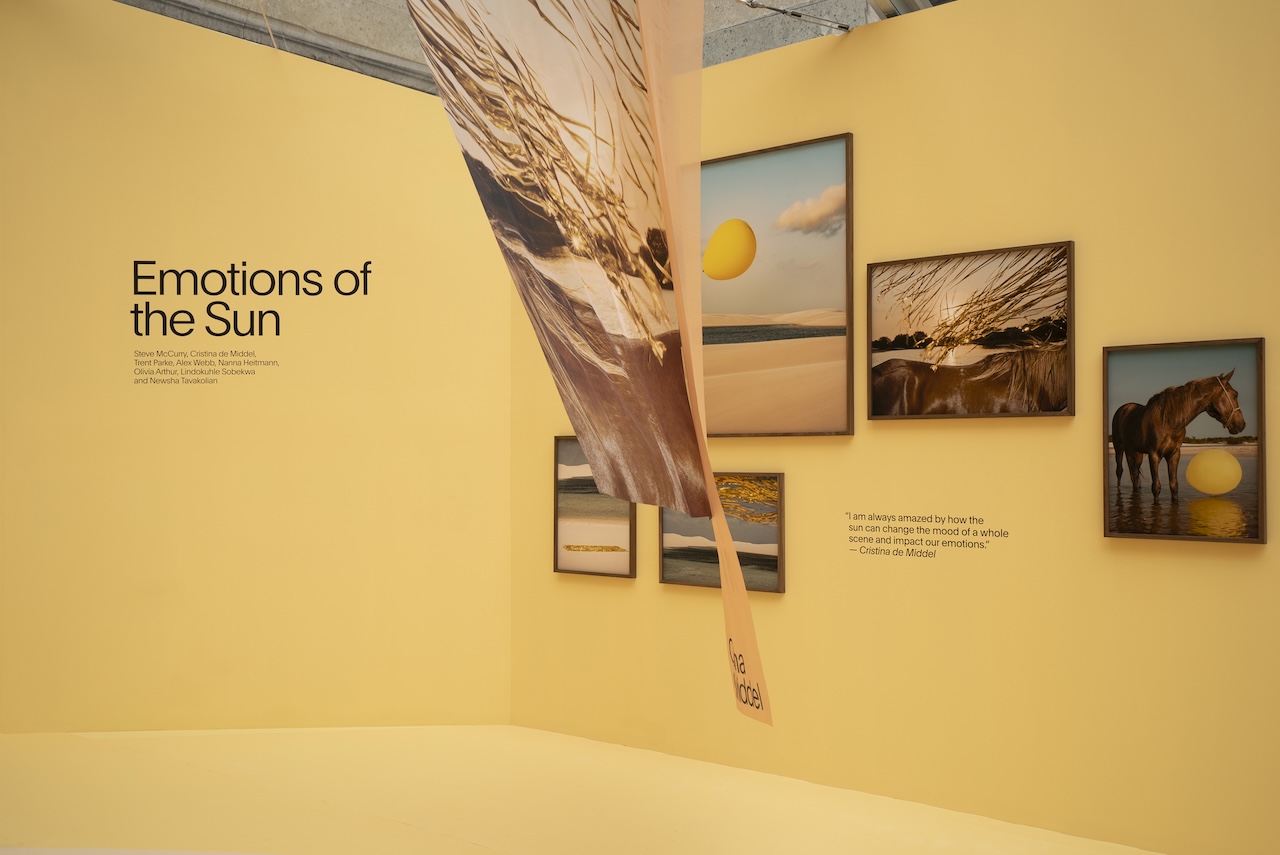
This “Great Lady of Champagne,” as some called her, revolutionized the industry with her invention of the riddling table and a relentless focus on quality. Her legacy continues to inspire Veuve Clicquot’s pursuit of innovation and artistic expression, evident in the boundary-pushing Emotions of the Sun exhibition, a natural progression of the brand’s Solaire Culture.
Emotions of the Sun: A Multi-Sensory Journey Bathed in Sunlight
The central theme of the exhibition, as the name suggests, was the sun — a universal symbol of optimism, new beginnings, and the warmth of life. “The richness comes from the complexity and the diversity and multiplicity,” Gallot explains about the choice of photographers featured in this exhibit. Eight Magnum photographers across five continents, each with their distinct styles and perspectives, were invited to interpret this theme — Steve McCurry, Alex Webb, Trent Parke, Olivia Arthur, Lindokuhle Sobekwa, Cristina de Middel, Nanna Heitmann, and Newsha Tavakolian. The resulting collection showcased a captivating symphony of emotions and experiences, all united by the unifying power of the sun’s radiance.

Walking into Emotions of the Sun was akin to stepping into a world bathed in sunshine. The exhibition space was meticulously designed to evoke a sense of serenity and optimism, to create a space that reflected the joy and positivity of the sun. A lush garden bathed in natural light greeted visitors, setting the tone for the multi-sensory experience that awaited them.

From Steve McCurry’s majestic Mount Fuji bathed in golden light to Olivia Arthur’s playful portrayal of a childhood summer, the photographs resonated with a sense of joy and wonder. Visitors were not merely observers; they were invited to become part of the art. As Gallot elaborates, “The exhibition is amazing; everything is amazing. It’s super nice, the place is very cool, people are relaxed and smiling. That’s exactly everything we look for.” This immersive experience, bathed in sunshine and positive vibes, was a testament to the power of art to connect with the human spirit.
Capturing the Essence of Sunshine: A Photographer’s Perspective
Delving deeper into the artistic interpretations of the sun theme, we explored the perspectives of the photographers who brought Emotions of the Sun to life. Steve McCurry, the renowned photographer behind the majestic Mount Fuji image, discusses the cultural significance of the mountain in Japan and how it embodied the concept of optimism and new beginnings.

“Japan was an obvious choice. They have the sun on their flag, and a lot of history involving the sun,” McCurry shares with GRAZIA USA. “I thought it’d be a great challenge to go there and try and do something, looking at iconic locations like on Fuji, Kyoto, and then seeing how we could incorporate a sense of light in those locations.”
McCurry also elaborates on the technical challenges of capturing the perfect sunrise. His biggest challenge? The weather. “If you have a day like this, you probably wouldn’t be able to see Mount Fuji because of the cloud cover. So that was the main [challenge]. I’ve been finding the juxtaposition between getting something else in the frame, but you have to have the mountain in the picture. If the mountain isn’t in it, then you don’t have a picture,” McCurry explains.

Aside from his technical expertise in providing exquisite photographs, McCurry also expresses his love for the Veuve Clicquot brand. The seamless partnership and opportunity to work together brought an additional sense of synergy to the exhibition.
A Curator’s Vision: Unveiling the Power of Sunlight
Pauline Vermare, the mastermind behind the Emotion of the Sun‘s curation, recognizes the profound influence of artistic diversity. “This project came beautifully together, and it was very natural and organic,” Vermare shares. “For each individual text, I interviewed each photographer, asking them, ‘So what happened once you were asked?’ and ‘Why did you do this? Why did you go there?’ Some of them stayed at home, but some of them traveled, in fact, quite long distances. Here, I’m more like a psychoanalyst. I change heads for every mission.
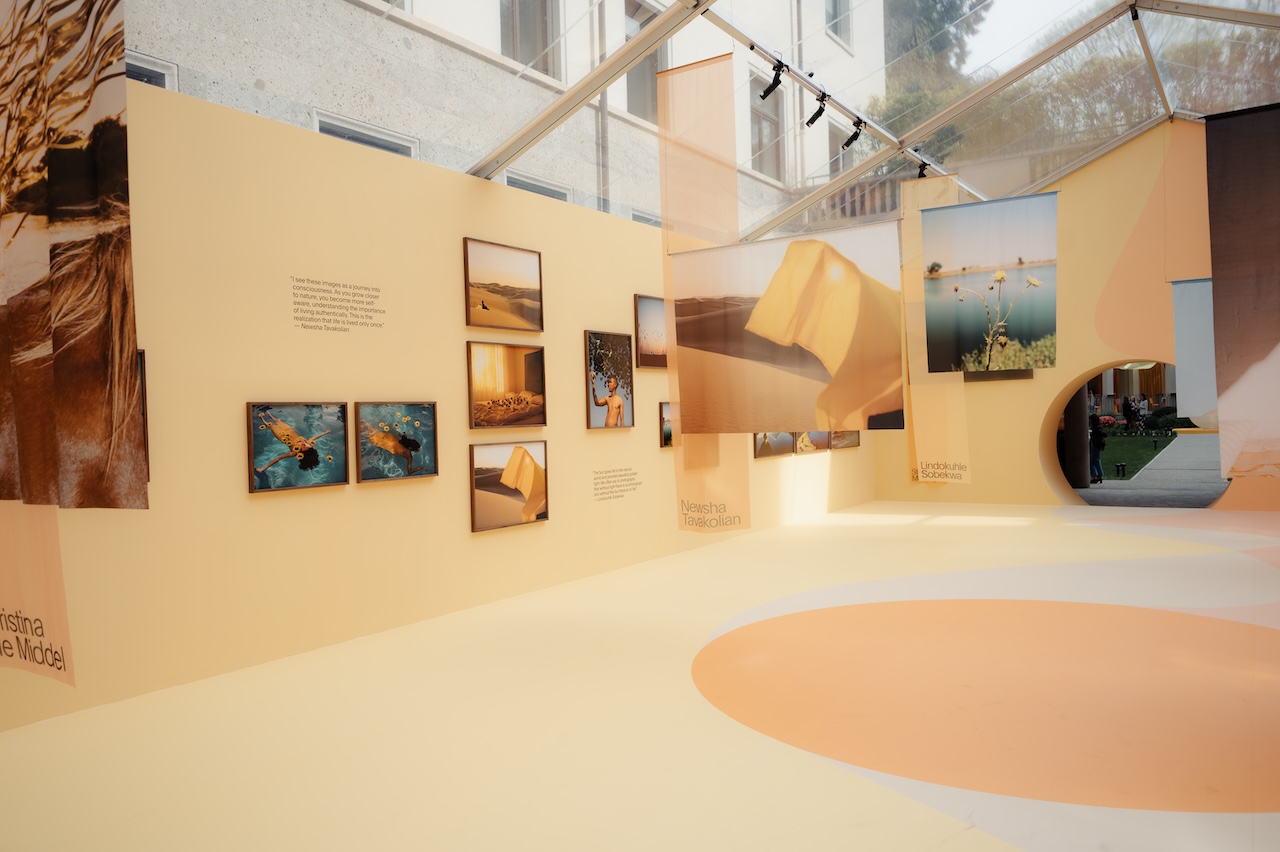
“You have essentially eight voices, but it’s one project. You have Veuve Clicquot and Magnum talking with each other through this project,” she continues. “I feel like this moment can be seen. It’s quite intense, right? The world, it’s always, I’m sure, like this, every generation, but we can feel a little the chaos and everything. And so suddenly on a project like this, to really feel the peace and to know that there’s some harmony, it feels really quite good. And I feel like everybody was in agreement that this is what they wanted to convey.”
Vermare’s focus on fostering a sense of peace and harmony aligns with the selection of diverse viewpoints, showcasing the sun’s universal appeal across cultures and artistic styles. This commitment to a multifaceted exploration broadened the audience’s understanding of the sun’s symbolism. Working closely with the photographers, Vermare selected five images from each artist’s body of work, ensuring thematic coherence and visual harmony. She describes the process as akin to conducting a symphony, where each photographer’s work played a distinct yet complementary role. The vibrant photographs, bathed in sunlight, and the meticulously designed exhibition space fostered the ideal sense of optimism and joy.
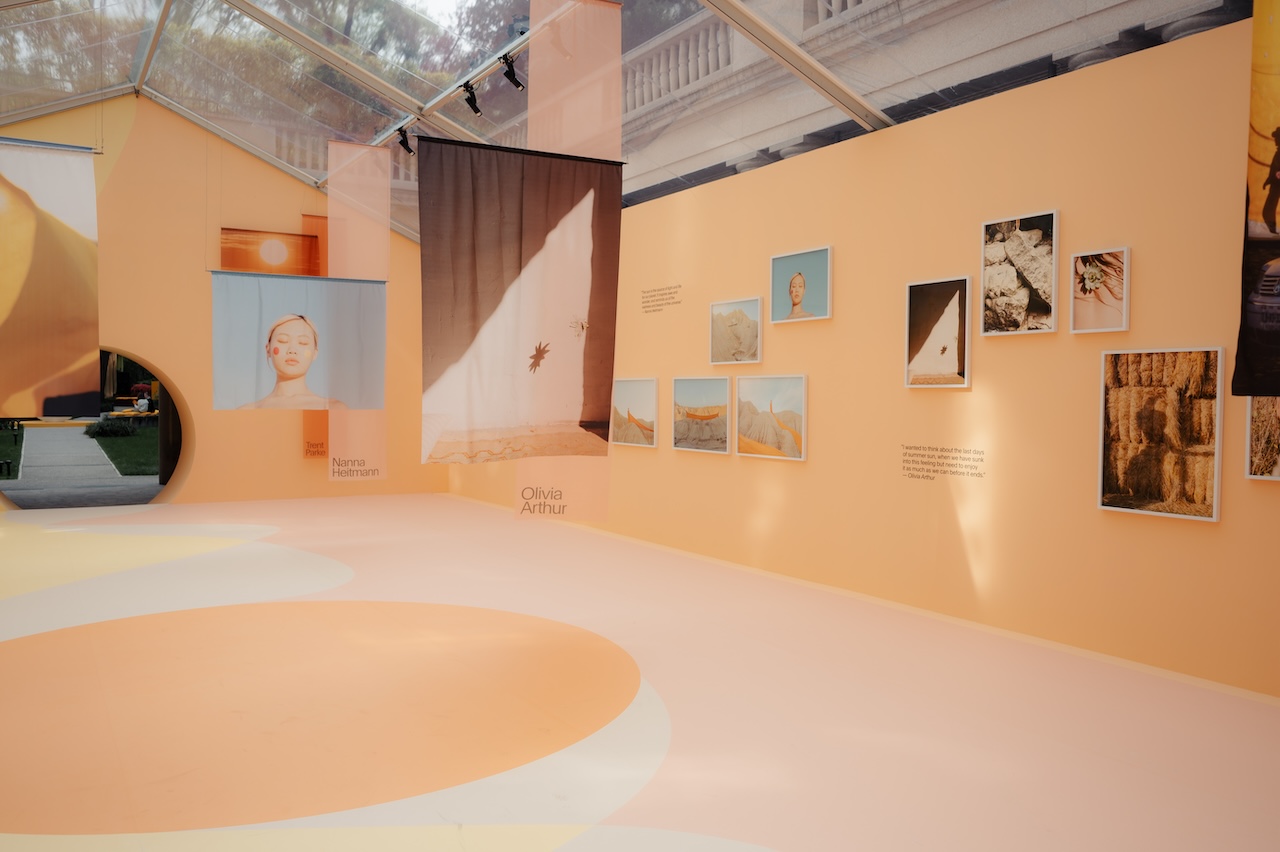
Vermare elaborated on this intention, stating, “There’s a harmony when you’re in the space. I would like to sit there on the bean bag and just not move. Like in museums, they do that sometimes, to just take it all in and feel the sensation of being soothed.” By fostering this emotional connection with the sun’s essence, Emotions of the Sun left a lasting impression on its visitors, inspiring them to find beauty and joy in everyday moments.
A Culinary Symphony: Where Taste Meets Art
The Milan Design Week exhibit went beyond simply displaying photographs. It was a multi-sensory experience designed to engage all the senses and create a sense of connection. Following the garden, visitors embarked on a unique culinary journey through a distinct dining experience at the Clicquot Café — curated by renowned Chefs Jean Imbert of Paris’s Plaza Athénée, Mory Sacko of MoSuke Paris, Valentina Rizzo of Farmacia dei Sani in Ruffano (Lecce), and Karime Lopez, the first Mexican woman chef to obtain a Michelin star, at Gucci Osteria in Florence — for the Sun in your plate portion of the exhibit. These culinary masters, inspired by the theme of the sun, created dishes that were not only delicious but also visually stunning.
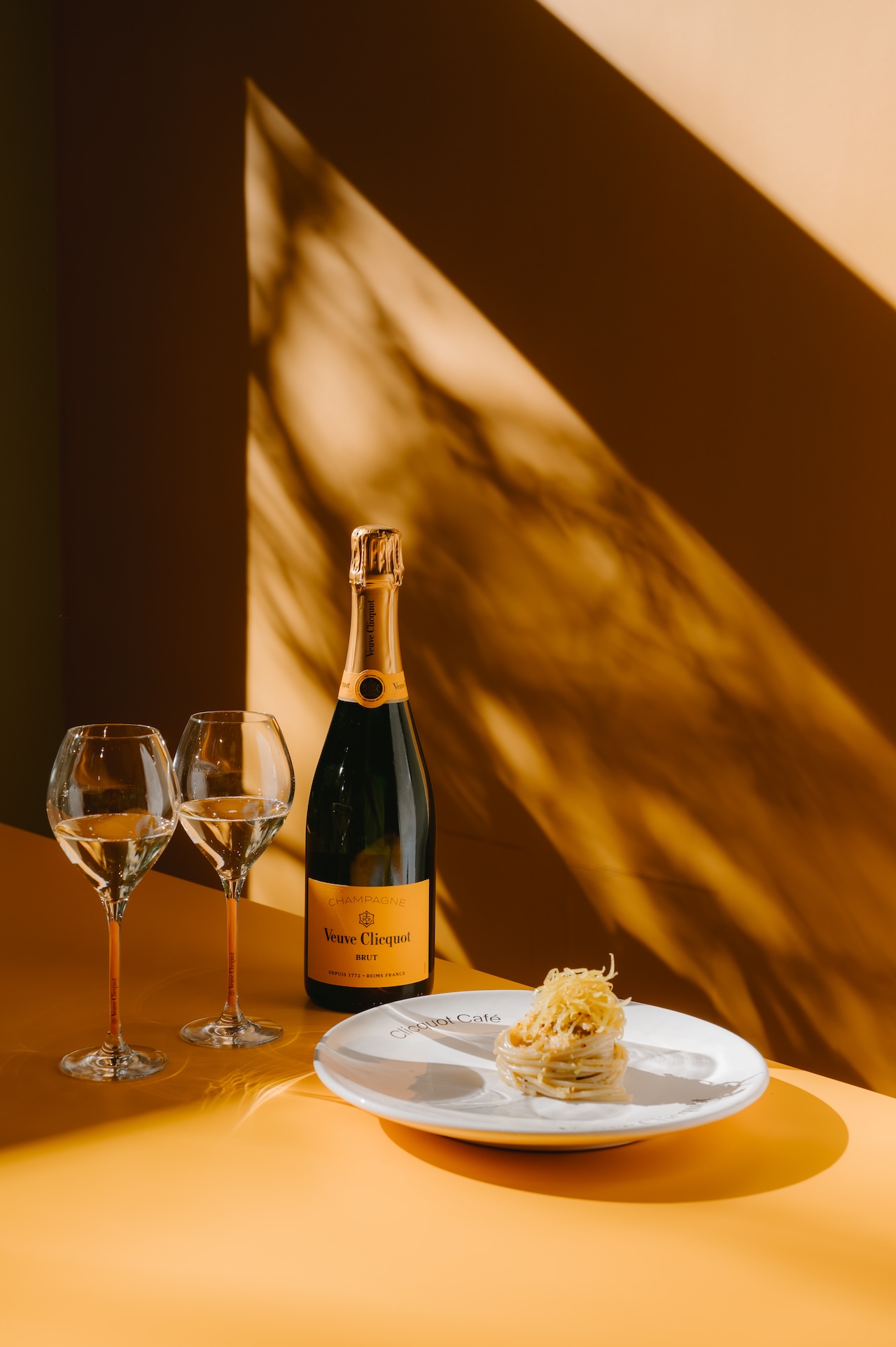
Chef Karime Lopez, known for her bold flavors and Latin American influences, offered a unique perspective in creating one of the multi-sensory tasting experiences. She discussed how she used spices and vibrant colors to evoke the warmth and energy of the midday sun, sharing, “I was really into doing something with their color, but I didn’t want to use colorants or chemicals. So if you see the bread, the bread inside is happy. The color is like orange-ish — we tried a lot to do this. We were testing for one month to [figure out] how we could come up with this color without colorants or things.

“We just realized that here in Italy, they have these special eggs for yellow pasta. They give more corn to the chicken, to the hens, and everything, so they can have this color,” Lopez continues. “So we used these eggs, and we used a little bit of saffron, so it can work.”
Her dishes, plated with meticulous attention to detail and bursting with vibrant colors, mirrored the optimism and joy evoked by the photographs. “I’m really also into the aesthetic of my food, so I really enjoy this collaboration to make the colors and everything,” the Gucci Osteria Chef explains to us.

Each course was paired with Veuve Clicquot champagne, creating a harmonious interplay between taste and visual art. “A lot of people like to try to put champagne in a box,” Gallot states. “And the word that I hear constantly is ‘celebration.’ Sorry, guys, we are not about celebration. If it happens that for a celebration people buy a bottle of Clicquot for a wedding, for a kid going to university, great. But we are more about sharing good moments about the experience.
“When you say, ‘How do you link champagne and photography?’ it’s about capturing moments. It’s about building emotion. It’s about building experiences. And all this works very well together,” Gallot shares.

This philosophy of finding joy in the everyday moments is central to Veuve Clicquot’s brand identity and is what their Solaire culture aims to capture. The multi-sensory experience, from the sun-drenched garden to the meticulously crafted dishes paired with exquisite champagne, offered visitors a chance to connect with this message and create a lasting memory.
A Look Towards a Brighter Future
The future of Solaire culture remains open-ended, much like the boundless potential of a sun-drenched day. Gallot excitedly shares the Emotions of the Sun‘s next stop, an exhibition in New York City this Summer 2024 — alongside dreams of potentially traveling to Japan, where Steve McCurry’s captivating image of Mount Fuji resides. This openness reflects the brand’s commitment to constant evolution and exploration.

Beyond the exhibition, Veuve Clicquot’s dedication to the Emotions of the Sun concept extends to all aspects of the brand. The recent redesign of their label, making it even more prominent and bold yet simplistic, reflects this commitment to sunshine and optimism. Additionally, their partnerships with top bars and restaurants around the globe solidify their connection to creating positive experiences bathed in sunlight.
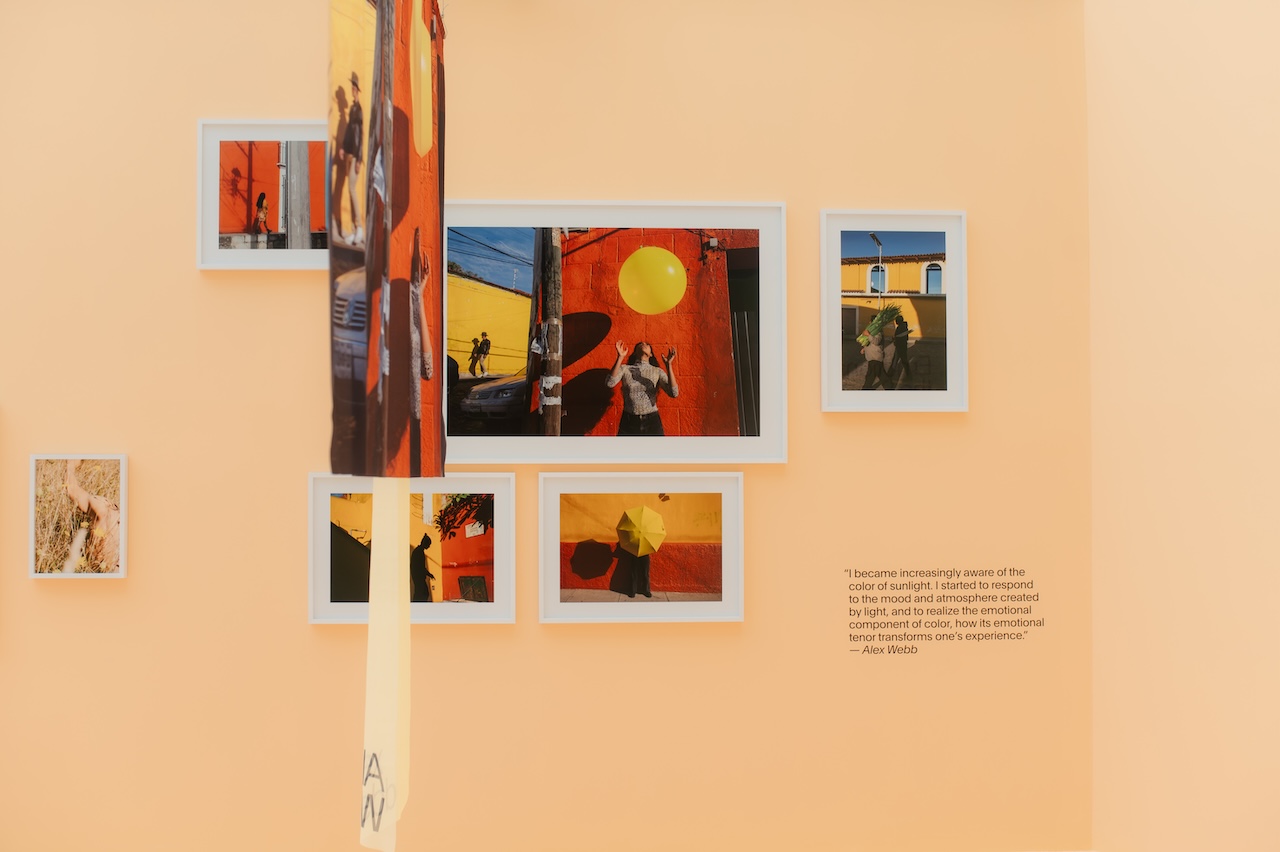
Veuve Clicquot’s Solaire culture stands as a beacon of optimism in a complex world. It is a testament to the power of artistic collaboration, the enduring legacy of a pioneering woman, and the brand’s unwavering belief in the joy of living in the moment. The exhibition serves as a reminder to find beauty in the simple things, to embrace the warmth of the sun, and to create positive experiences that leave a lasting impression.
For the inaugural launch of Emotions of the Sun touring exhibition, Veuve Clicquot stopped in Italy during Milan Design Week, which took place at the Garden Senato Milano, from April 15 to 21.
Keep scrolling to read GRAZIA USA‘s exclusive interviews with Veuve Clicquot CEO Jean-Marc Gallot, Exhibition Curator Pauline Vermare, Partner Photographer Steve McCurry, and Partner Chef Karime Lopez.
Interview with Jean-Marc Gallot, Veuve Clicquot CEO
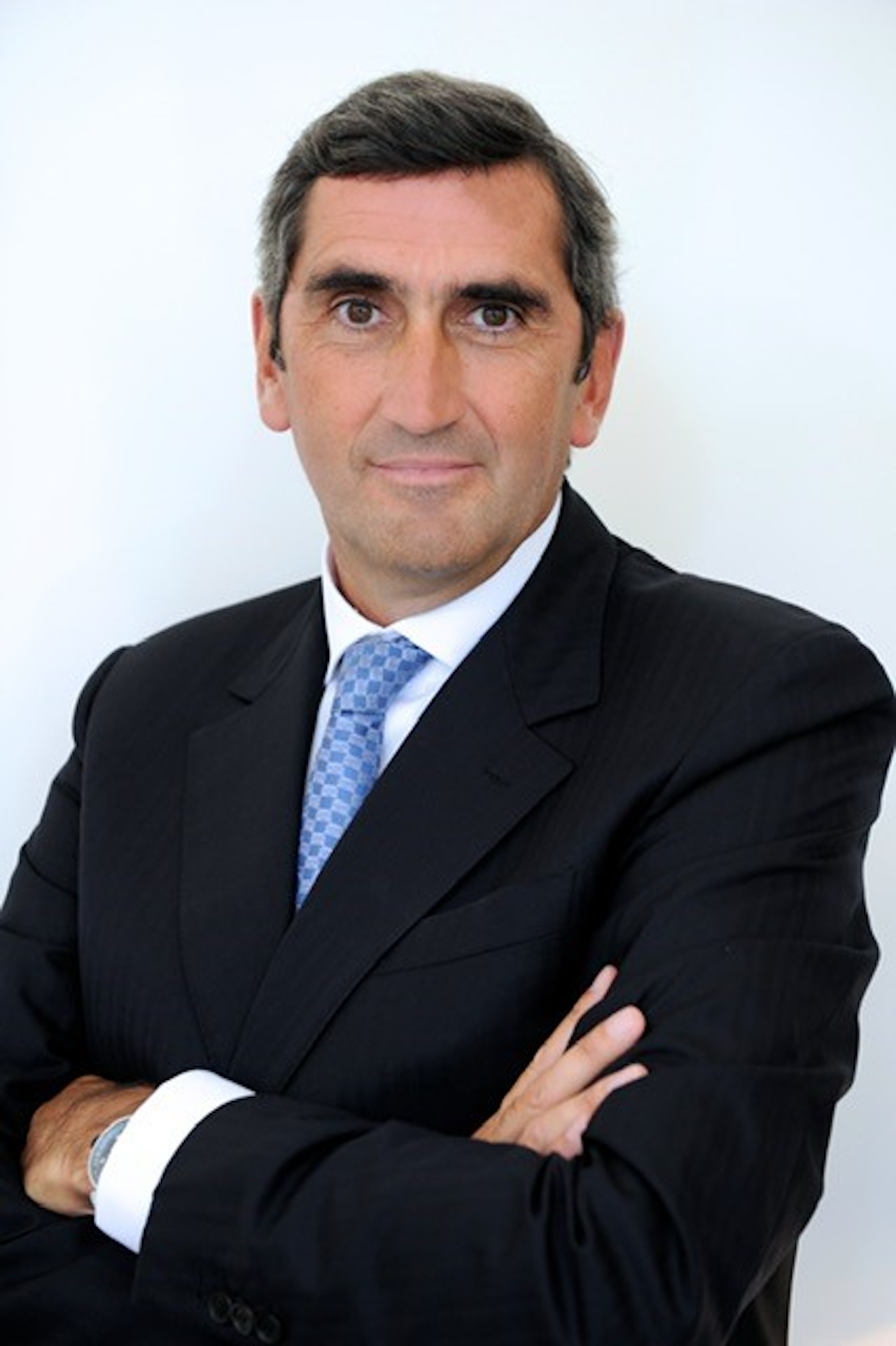
GRAZIA USA: How did the collaboration in the partnership with Veuve Clicquot and Magnum Photos originally come about? And how did you land on specifically the sun as the thematic approach?
Jean-Marc Gallot: There’s a few things in your question, the first one is that it all comes back to Madame Clicquot. Madame Clicquot, 1805, 27 years old, lost her husband. Incredible audacity, determination, optimism in life. She’s the spirit of the Veuve Clicquot. Even some people called her “La Grande Dame of Champagne,” “The Great Lady of Champagne,” because she invented the Riddling table, the vintages, the rosé. She exported, to the world, the champagne. First year: Italy. That’s why we’re in Italy today because we have been in Italy for a very long time. And we have this incredible yellow label, so when we thought about it years ago, we thought, “But this brand is about optimism. There is this incredible yellow. We are a kind of synonym of audacity and opportunity to do things.” We believe the brand is Solaire. It’s sunny. It’s the smile, the opportunity, the audacity. So all the strategy and the concept of the Maison has been to create a Solaire culture. So for the 250 years, we created this exhibition, which started in Tokyo, went to Los Angeles, and then to London, Solaire Culture. It was in November 2022 in Los Angeles; fantastic exhibition with Gwyneth Paltrow and Gal Gadot. It was an incredible opening. And then last year we said, “Now we have to write the second step.” And the second step was, “How can we capture this moment which is about the emotion of the sun, especially when the sun is rising?” And we said, “Why don’t we go to see photographers?” And we looked at the reference in photography, Magnum, and we talked to these guys. They have been super nice and we have decided to work together and to have this project, which comes from nowhere. People say, “What is your recipe? Are you going to do the same?” “No, there is no recipe. It’s just emotion, intuition, and being authentic of what Veuve Clicquot Maison is about.”
GRAZIA USA: I love that. You already answered my next question of how it ties into the brand’s identity and culture. It’s such a seamless synergy that people might not think of at first, but now that you guys are putting it together, it’s so obvious that it goes together hand-in-hand.
Jean-Marc Gallot: Absolutely. It is very obvious. It is very authentic. It has a lot of depth, a lot of purpose. So it’s not fake. The next generation, you cannot lie to them. If things that you do, things that you put together is not meaningful, authentic, with a sense of purpose, it doesn’t work. Here, as you see here, everything you enter, you see this, you see the garden, there is the different four meals from the chef, Sun in your plate, and the champagne, all that works together and is combined and is really consistent. So we like this. We like to be consistent and also to have our share in this very difficult world to bring a sense of optimism.
GRAZIA USA: It’s been beautiful to also see how each artist, whether they’re a chef or a photographer, interpreted the theme differently and brought it to life. And I think it’s very special that you guys partnered with not just one photographer and one chef, but multiple in order to bring that to life.
Jean-Marc Gallot: The richness comes from the complexity and the diversity and multiplicity. That’s very important. That’s what we are, I guess, I hope, achieving here.
GRAZIA USA: You definitely are. It turned out beautifully.
Jean-Marc Gallot: I think these photographers are amazing. The exhibition is amazing; everything is amazing. It’s super nice, the place is very cool, people are relaxed and smiling. That’s exactly everything we look for.
GRAZIA USA: Yes, and the color of Veuve Clicquot, I think it automatically evokes happiness.
Jean-Marc Gallot: Absolutely. Optimism, audacity, and it’s all what this exhibition is about. It’s the emotion that it gives you. My favorite time of the day is when the sun is rising, you look at the sun and you say, “Everything is possible. The day is mine.” So that’s exactly what we are looking for. This project, which was a little bit crazy at the beginning. Can you imagine? You have been talking for half an hour with Steve McCurry. There are some people who die to spend some time with him. The guy, he said, right away, “Okay, I’m thrilled by the project. Let me go to Japan, take the time to take the right picture of Mont Fuji.” I mean, you know that.
GRAZIA USA: Incredible, literally incredible. And, of course, the color of Veuve Clicquot, it evokes the sun. But also with champagne in general, how would you say you see the interplay between photography and the emotions it [champagne] evokes in this specific exhibition? And what do you hope that the customers feel?
Jean-Marc Gallot: A lot of people like to try to put champagne in a box. And the word that I hear constantly is ‘celebration.’ Sorry, guys, we are not about celebration. If it happens that for a celebration people buy a bottle of Clicquot for a wedding, for a kid going to university, great. But we are more about sharing good moments about the experience. When you say, “How do you link champagne and photography?” it’s about capturing moments. It’s about building emotion. It’s about building experiences. And all this works very well together. So by visiting this exhibition, then all of a sudden you feel like you understand what it’s about, the emotion that these incredible photographers got. And all in all, it’s combined with having this incredible food, having a nice glass of champagne. All in all, [it] gives you an experience for which you don’t know where it’s coming from, but it’s a feel-good experience. We like people to feel good and have a smile.
GRAZIA USA: Definitely. And you’re achieving that — I’m feeling good here!
Jean-Marc Gallot: Good. Excellent.
GRAZIA USA: I know you spoke on a little bit of why you chose Italy, but was Milan specifically chosen because of Design Week?
Jean-Marc Gallot: Yes. We have been, in the last 40 years, working with incredible designers in the history of Veuve Clicquot. We like this moment of the year, which is basically, for me, in Italy, nearly the beginning of the summer. A little bit later in other countries, but here it’s the beginning of the summer. And by looking at it, I think that this is a special moment where you have so many people coming from all over the world, very educated, very curious, very culture-orientated. I think that back to the point of the sense of purpose and the new generation, there is the sense of showing interest and respect to the different cultures. You have here eight photographers with different history, experience, background, culture. And this all put together gives a mix-and-match feeling, which all of a sudden seems real and seems true.
GRAZIA USA: Definitely. It definitely comes to life and I think Design Week is the perfect place and perfect audience to bring in as well. Are there any other stops on the exhibition tour or is it only Milan and New York?
Jean-Marc Gallot: Step by step. We are in Italy. We know that we’re going to New York. Then, I wish, I dream, when I see the work of Steve [McCurry] about Mount Fuji to go to Japan. I hope we will be able to make it happen in Japan and maybe one day in another continent. I would love to go also to Africa, for example. That would be an achievement, but we will see. It’s a lot of work. But we have no recipe. Nothing is written in the stone. So let’s be flexible. Let’s see also where life is taking us as long as we have a very strong message, which is, “We, Veuve Clicquot, dream big, bright, and beautiful.”
GRAZIA USA: I love that. And for your history, Veuve Clicquot has had a long history of artistic collaborations and going outside of the box of other champagne companies. How do you see this specific partnership with Magnum Photos contributing to the legacy of the brand and where it could go in the future?
Jean-Marc Gallot: To your point, it is a major milestone of Veuve Clicquot. We have had a lot of major milestones, but this one, I can tell you, we are super proud of it. We are very not only proud, but also moved by this partnership. I think that when some people in the next generation will look at the history of Clicquot at the beginning of the 21st century there will be this Solaire Culture exhibition, which happened two years ago for the 250 years [anniversary]. There will be also this ability to capture the incredible talent of this photographer to be also a capture of the time we live in, for which the environment is not that easy. But if you are getting to another, I mean, objective or target in life, which is just the experience, the joy of a rising sun, all of a sudden you make a pause and you feel good with what you are experiencing. So, let’s make sure that we are contributing, maybe not as big as I would love to, but contributing to make our world feeling better.
GRAZIA USA: Definitely. I love that you guys have this mission behind it because I think it does come across very authentic, and I think, aside from the wonderful taste, it does help people want invest in the brand and drink the champagne because the brand stands behind a more positive message in total.
Jean-Marc Gallot: You always need to have a mission and to know what you are aiming at. Otherwise, there is no sense and you lose a lot.
GRAZIA USA: I know you mentioned there’s no specific rule book. I love that you can flow with what you guys choose to do in the future. But besides Design Week, and besides the New York exhibition, are there any other plans to integrate specifically this theme of the sun into your future projects?
Jean-Marc Gallot: Ah, it’s in everything we do, it’s the sun. We are looking to have the best terrace in the best restaurants and bars around the world. It’s all about the sun. Our label is telling the sun. When you look at this yellow label, actually, we just redesigned it to make it even more simple and even stronger. So the Solaire strategy, the sun is everywhere in everything we do. So it’s not about today, this exhibition. It’s because we have been consistent and very ambitious about it, that we are now feeling comfortable to be in this environment for the future.
GRAZIA USA: I love that. And is there anything else you want to share with our readers or that you want them to know either about the brand, the exhibition, or the future of the company?
Jean-Marc Gallot: The future of the company is unpredictable. We love to be unpredictable, and we love to make people be surprised and to feel kind of bound to Veuve Clicquot as a big family and a way of living, which, again, is bringing you some positive mood.
Interview with Pauline Vermare, Exhibition Curator
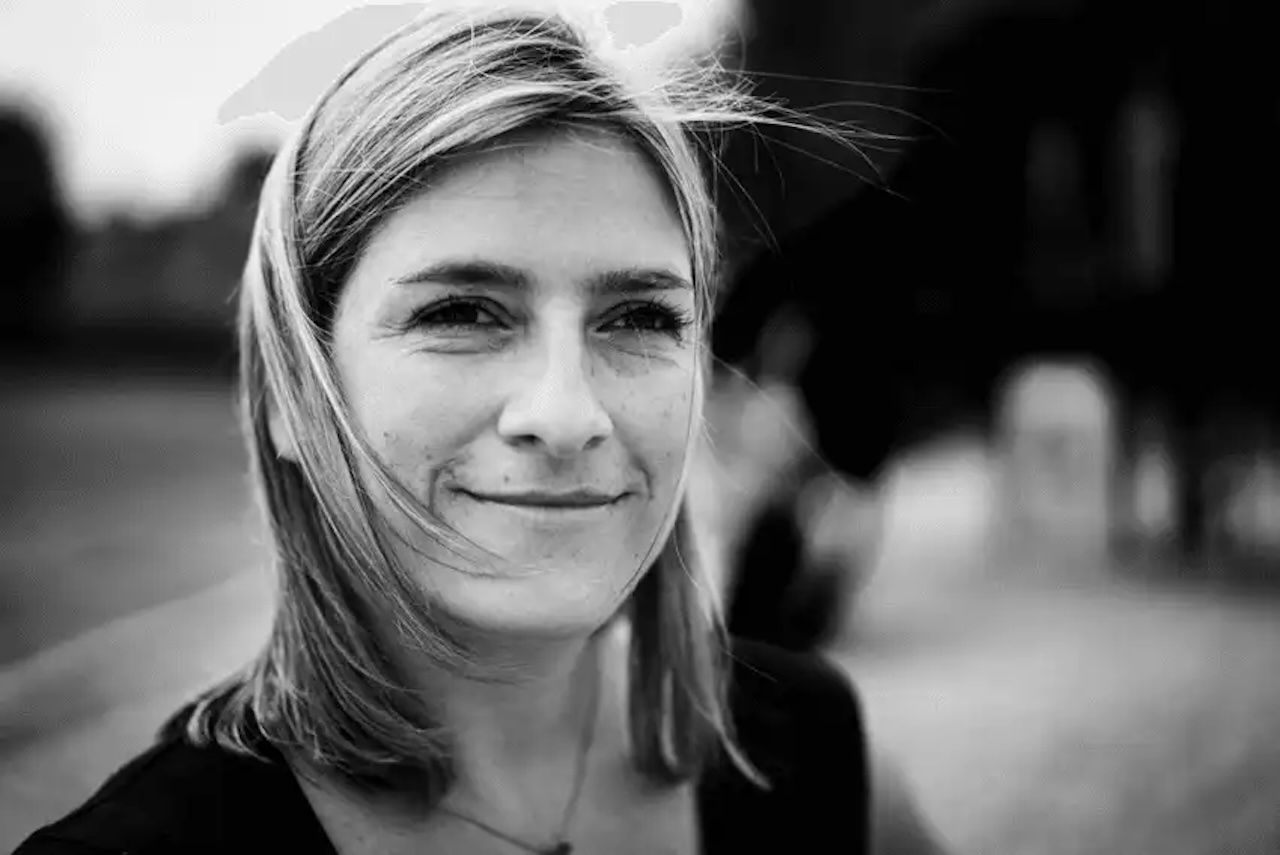
GRAZIA USA: First, I would love to talk to you about how the collaboration between Veuve Clicquot and Magnum Photos originally came about and the significance of the sun and how you created the exhibition.
Pauline Vermare: I should say that as the curator, I came after the first stage. So the first stages were between Magnum Photos and Veuve Clicquot. Veuve Clicquot, in fact, it’s the first collaboration with photography, which I think is super interesting. They have supported artists for many, many years, decades. But it’s the first time they engage in such a deep way with photography. And that’s no coincidence that they chose Magnum Photos, because Magnum Photos, as we know, is the most — I’m not very objective — but it’s anyway certainly an incredibly prestigious and important collective of photographers. It’s interesting also in the terms of philosophy of the groups that Magnum Photos was created in 1947 by Henri Cartier-Bresson, Robert Capa, George Rodger, and David “Chim” Seymour, in a spirit of optimism after the trauma of the Second World War. I feel like this combination, this collaboration, is very meaningful because for different reasons and different points of departure, this is a celebration of something that is almost elemental of our relationship with nature, of a day on this planet, what do, how we enjoy. I think this is quite special in that sense, that those two worlds would collide and to produce a show like this. That is quite philosophical and existential in a way, in a light way. So I used to be the Cultural Director of Magnum Photos in New York. That’s where I’m based. I’m French, but I’m based in New York. That’s where I work. I was working for Magnum Photos there for many years. And then I’ve been working on independent projects. And so Magnum Paris actually reached out to me saying, “We have a collaboration. It’s about the sun. Would you be interested in curating it?” And I thought, “Absolutely, this is the most soothing project that I’ve ever heard of.”
GRAZIA USA: Bringing happiness.
Pauline Vermare: Exactly. Really, it’s something. Look here, the birds. It feels so good, and it feels so right. And so I said, “Yes.” And so my job was to come at some point early in the process, but after the photographers had all produced their work. I was there to select photographs from their sometimes very vast body because some of them, in fact, Trent Parke, for instance, would not stop shooting. He was so excited! And so I, in collaboration with the photographers and Magnum and Veuve Clicquot, had to choose the five images per photographer. And then not only to choose for them to be a nice one package per photographer, but also to look nice with the other. So I see myself as a conductor if you like. So I have a bit of a symphony, and we have on the one hand, the piano and then the strings, and so they all come together in this beautiful place. And I’ve worked very closely with the scenographers, of course. And they build this beautiful place with the color palette that you can see all around. It’s stunning. And it’s beautiful because it brings the work of the photographers. There’s a harmony when you’re in the space. I would like to sit there on the bean bag and just not move. Like in museums, they do that sometimes, to just take it all in and feel the sensation of being soothed. And yeah, there’s a harmony there.
GRAZIA USA: Definitely. It all came together so beautifully. Can you walk us through the specific choices you made for this exhibit with Emotions of the Sun and how you selected the specific works? You said that the photographers were already selected before you were brought in and had done the work already, correct?
Pauline Vermare: Yes. That was between Magnum and Veuve Clicquot. Then I was asked to choose five photographs by each photographer, so 40 photographs.
GRAZIA USA: Was that difficult?
Pauline Vermare: It was hard, but then it became obvious which photos would look good with each other. It came to the surface. It was quite everything, really. This project came beautifully together, and it was very natural and organic. And then I had to write, and so I wrote the text. For each individual text, I interviewed each photographer, asking them, “So what happened once you were asked?” and “Why did you do this? Why did you go there?” Some of them stayed at home, but some of them traveled, in fact, quite long distances. Steve McCurry went to Japan. Some stayed at home, like Lindokuhle Sobekwa and Trent Parke. So, “What was that choice like? What did you do?” And then, “What feelings did you want to come back?” Here, I’m more like a psychoanalyst. I change heads for every mission. But so I wrote this little text. I wrote the whole, then the introduction. So to bring it all together, because you have essentially eight voices, but it’s one project. You have Veuve Clicquot and Magnum talking with each other through this project. Why at this moment? I feel like this moment can be seen. It’s quite intense, right? The world, it’s always, I’m sure, like this, every generation, but we can feel a little the chaos and everything. And so suddenly on a project like this, to really feel the peace and to know that there’s some harmony, it feels really quite good. And I feel like everybody was in agreement that this is what they wanted to convey.”
GRAZIA USA: And you did a beautiful job. All of the work, although they’re so different and they each had such a different approach, they all flow together very, very beautifully.
Pauline Vermare: Yes. Thank you. I think they do.
GRAZIA USA: And I know photography and picking the photos is, of course, your expertise. But how do you see with this event, the interplay between the photographs and Veuve Clicquot as a brand — the food the chefs are providing and the champagne — and how it all plays together?
Pauline Vermare: For me, it’s a bit like it’s a multisensory experience. And of course, because of where I come from, for me, the photographs are at the heart of it. But of course, everything else is incredible. Olivia Arthur’s series is all about seizing the moment. And that’s what she was talking about, making the hay. And there’s something about this project that is very much about this. And of course, it’s a privilege to be able to seize the day. But there’s something quite beautiful about the message of optimism that Veuve Clicquot wanted to convey. Ultimately, photography talks about war, Magnum Photos talks about [war]. But photography also is the best tool to convey positive emotions and to try to comfort and uplift. For me, this whole project is very much about this. How does a brand like Veuve Clicquot support photographers? Because essentially, that’s what it is. This is Veuve Clicquot supporting photographers to work on a subject that they chose, but that the photographers were super happy to work on. To have free reign. It’s a carte blanche. They had no restraints in what they wanted to talk about. And so for me, this is a very virtuous collaboration, a very virtuous relationship between two houses who had something in common in the get-go and who meet to do something that will help people feel a little better.
GRAZIA USA: I feel like it definitely is conveyed that way. And going off of that, whenever people walk through the exhibit, maybe who haven’t seen these photographers before or weren’t aware of this collaboration maybe as much, what do you hope they get from it with the photographs that were selected?
Pauline Vermare: Definitely all those positive feelings: they’re going to feel, hopefully, soothed, there’s going to be some feeling of optimism, of recharging the batteries, something like this, to feel a little more in harmony, to look at nature, to look around you. There’s this expression: stop to smell the roses. That’s what I hope that people will get from this show is to exit and say, “Oh, let’s take a moment to enjoy those moments.” With all the chaos and the pain in personal and real life, let’s look around and see and hear the birds and look at the nature and feel some energy and respect it and feel at one with nature. I think it’s one of the big ones.
GRAZIA USA: That’s very beautiful. I agree. I think we all need that in our lives, to take a moment to pause and enjoy it. What has been your favorite part working on this specific exhibit?
Pauline Vermare: I mean, each stage was lovely, but I feel like working with the photographers is always, as a curator, it’s pretty much my favorite part. But to understand where they came from, what drove them to this or that direction, what they were experiencing. Personally, I thought it was beautiful. The relationship between photography and the sun is so obvious. Photography means to write with light. So to have that conversation one-on-one with eight photographers who are so different — different generations and everything about this life — that was quite the beautiful process.
GRAZIA USA: Amazing. It sounds like you have a very cool job that you are very passionate about as well. Were there any unexpected challenges or maybe artistic discoveries you encountered while curating this exhibit that involved multiple photographers responding to the same theme? Were there any challenges that arose with that?
Pauline Vermare: No, it could have been. I’m sure the challenge was more on the production side than on the curatorial. On the curatorial side, it really wasn’t. There wasn’t a challenge at all. It was all done. The challenge maybe was to work with the space, right? But the scenographers did such a beautiful job that, frankly, challenge was not so challenging. It was really more of a, let’s think about sizes for the prints that will be good, that look not too small, not too big, not be too repetitive in the size of the frames. But that was more like a classic curatorial process. Because the rest of it was very smooth, and teams were a pleasure to work with them, Veuve Clicquot and Magnum. It was very professional and very feminine. It was all women — not the photographers, it was half and half — but it was a very professional and dynamic and positive process.
GRAZIA USA: That’s beautiful. I love that. I think the space came together very beautifully as well. The way it’s set up, like I was saying, they all approached it differently, but they flow together very beautifully. And especially with the weather today, I feel like the light hitting it is beautiful. Is there anything else you would love our readers to know, either about the specific work, the exhibit, your process, anything else that you want to share with them?
Pauline Vermare: For those who can’t see the show, look at the work online. Because there are many ways to look at the photographs, of course, but to take those photographs in. Try to maybe take a moment in the day if they need a little soothing, a little pause. I would strongly suggest going on the Magnum website, looking at those photographs, and taking it all in.
Interview with Steve McCurry, Partner Photographer
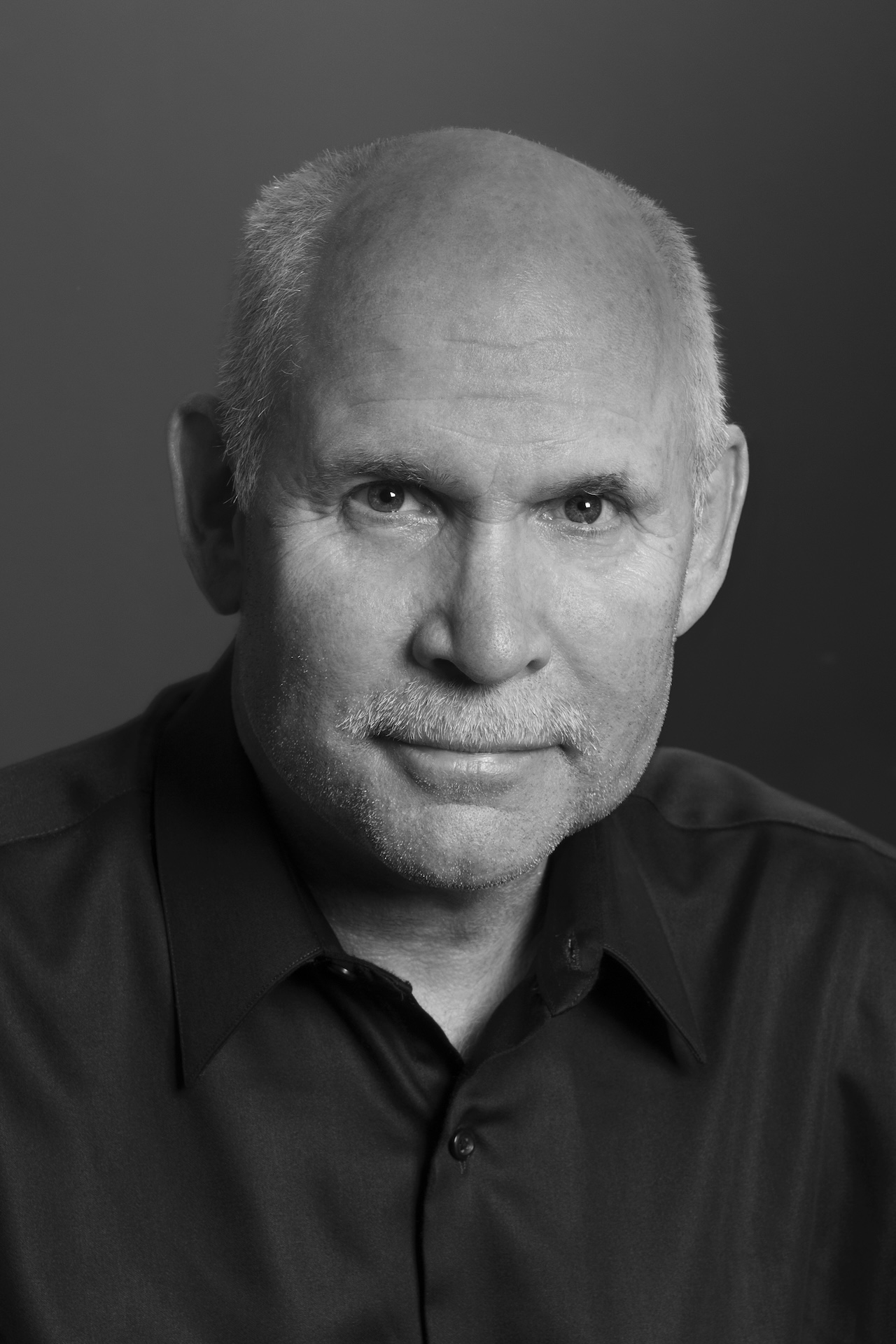
GRAZIA USA: For your series, specifically, you went to Mount Fuji in Japan. Can you talk about the connection between that specific location and the concept that you interpreted for Emotions of the Sun and what the sun means to you within this inspiration?
Steve McCurry: We picked Japan. I think we were looking for a wide international approach, different continents. Japan was an obvious choice. They have the sun on their flag, and a lot of history involving the sun. I love Japan. I thought it’d be a great challenge to go there and try and do something, looking at iconic locations like on Fuji, Kyoto, and then seeing how we could incorporate a sense of light in those locations. As I was imagining the shoot, I was wondering about if we could get the sun rising in proximity to Mount Fuji. So, fortunately, the sun rose right next to the mountain. That was great. So there’s all this wonderful light and renewal, optimism, and it’s very great color, blue sky and all that. So I thought it was a good idea. It’s an important market for the brand, too. So I mean, of every place in the world, I mean, I guess, I thought that was a logical choice.
GRAZIA USA: The colors translated beautifully, very vibrant. Was there any aspect of it that proved to be challenging when trying to execute?
Steve McCurry: Just the weather. Because if you have a day like this, you probably wouldn’t be able to see Mount Fuji because of the cloud cover. So that was the main [challenge]. I’ve been finding the juxtaposition between getting something else in the frame, but you have to have the mountain in the picture. If the mountain isn’t in it, then you don’t have a picture. So just the weather was really the main challenge.
GRAZIA USA: How many days did it take to get the right weather? Did you luck out right away?
Steve McCurry: We got it on the second day. The first day was too much cloud. I guess if it had really been a washout, we would have pivoted to Kyoto. I spent three days in Kyoto anyway. And you can do a lot with doing interior work. I would have found a solution. But fortunately, the Mount Fuji thing worked out.
GRAZIA USA: They turned out beautifully. And of course, your focus was on the photography combined with the theme of the sun, but as an artist, how do you see the interplay between the photography in the exhibit and Veuve Clicquot Champagne in particular, and how they are combined?
Steve McCurry: Well, the color is whatever shade of yellow that is, so it matches the color of the sun at certain times of the day. I think, again, that the color is uplifting. I think it has a warmth and an optimism and a joy to that color. If you could attribute certain emotions, I think you would come up with that. So it’s just a poetic idea. I mean, it’s not a great leap to say, “We got this brand color, what could we do to come up with the sun and the colors?” It’s obvious in a way. So somebody imagined the idea, and then it was the question of execution.
GRAZIA USA: It definitely evokes happiness when you look at the color. What are your personal hopes for the impact of the collaboration and your work whenever people go through the gallery and see your work? What do you hope it evokes in them?
Steve McCurry: I think that in part, it’s what a pleasure it is to be alive on this planet and to be able to see these wonderful geographical shapes and people interacting with the landscape. It’s just a place that you look at the picture, you’re thinking, “I wish I was there. I want to go there.” It’s something that inspires you and all of that. I just think if you can create something evocative, something emotional, that people want to aspire to have that experience to go to that place and see it. I think that counts for a lot.
GRAZIA USA: And your work does a good job of that. I personally love to travel and want to travel, and seeing your work, it does evoke those emotions of, “Oh, I want to go there. That looks beautiful,” in all of the travel and the inspiration. So you did a very good job at that. And given your extensive experience photographing different [subjects] across the globe, how did capturing the sun in Japan differ from, let’s say, your usual approach or other projects you’ve worked on?
Steve McCurry: This was more craft pictures, very deliberate; go there to the location and then try and craft the sun, the light, the shape of the mountain, etc. But It’s not that different from going to a place, Venice, for instance, and saying, “What is it about Venice that touches me? How can I show that? What are the visual cues of Venice? What can I show in a picture that people would look at it and say, ‘Aha, that’s a picture of Venice.’” I think that what we did was, for me, to try and find a way of making a picture, which people look at it and say, “Yeah, that’s a view of Mount Fuji.” The shape of the mountain is a beautiful shape and very symmetrical. It’s just great. I mean, if there were 10 iconic mountains: Matterhorn, Mont Blanc, Kilimanjaro, I mean, Fuji would be on that list. I can’t even think of [them all]. Mount Everest, maybe K2. But pretty soon, that’s one of your top 10 in the world.
GRAZIA USA: Was that your first time there?
Steve McCurry: Actually, it was. I’d seen it from the train, maybe. But I had never really looked at it up close. All the times I’ve been to Japan, I’ve always been in Asaka, Yokohama, Tokyo, and maybe Kyoto. It’s kind of limited, usually either I’m in transit or there’s a job or something. It always kind of keeps mostly in Tokyo.
GRAZIA USA: Very cool. And I know they had to narrow it down to just five select images. Did you have a say in which ones were chosen for the exhibit, or did they really choose?
Steve McCurry: It’s always a collaborative effort. I think that, first of all, I’m the one who puts the pictures in, so automatically I’m selecting pictures that I feel are good candidates. I think that from their point of view, they’re trying to [understand], “How does everything fit together from all the pictures?” Then we have Kyoto, some Tokyo. I think there’s all these criteria, which I wasn’t really aware of. So when you’re doing a group project, you have to assume that there’s going to be an overview.
GRAZIA USA: I’m sure it’s hard to narrow the selection.
Steve McCurry: Well, five. I always look at a project like, “How interesting are these pictures? And is anybody going to care about them in five, 10, 20, 50 years?” You do the best you can and I don’t get too worried about, “Oh, they didn’t pick my favorite picture.” Because if it’s indeed a solid picture, it’ll end up in an exhibition or whatever. So I don’t really worry about that.
GRAZIA USA: I love that mindset. It’s a good approach because you can’t get hung up on those things too much. If it’s meant to make its way out there, it will. I like that.
Steve McCurry: And maybe it’s even better that I put it out there; it’s not part of an unseen picture.
GRAZIA USA: Is there anything else you want our readers to know, either about the process, the exhibit, or what you hope they get from your work?
Steve McCurry: Well, I think they should all rush out immediately and buy my latest book.
GRAZIA USA: I agree.
Steve McCurry: Also, I’m joking. No, I think it was a pretty straightforward project. I think it’s all good. I mean, everybody loves champagne. It’s celebratory. I mean, you can’t really drink too much champagne. It’s a good thing, so it’s a celebration. Champagne is all about, “Let’s relax and enjoy ourselves.” Life’s too short to get hung up. I think it’s great that you can have some champagne. And it’s a business; it’s a good business. We love the brand, we love the champagne, and they want to celebrate it and promote it, which is part of business. I mean, there’s other champagne brands, so you have to distinguish yourself. This is good! I mean, they really pulled all the stops out. They have all these chefs, and it’s good food, it’s a beautiful city. So it’s all good, calm, and positive.
Interview with karime Lopez, Partner Chef

GRAZIA USA: So first, I would love to ask you about how you would describe the way you approached the concept of Sun in your plate for your menu, and also how you brought the theme into food.
Karime Lopez: Well, actually, the food that we are serving today, we don’t have it in the restaurant [Gucci Osteria in Florence]. We used to have this burger but a long, long time ago, and we played a little bit for this special event. I’m really involved with the people; we had a very nice friendship with them. So I was really into doing something with their color, but I didn’t want to use colorants or chemicals. So if you see the bread, the bread inside is happy. The color is like orange-ish — we tried a lot to do this. We were testing for one month to [figure out] how we could come up with this color without colorants or things. So we just realized that here in Italy, they have these special eggs for yellow pasta. They give more corn to the chicken, to the hens, and everything, so they can have this color. So we used these eggs, and we used a little bit of saffron, so it can work. And also I love the summer and the spring because I’m from Mexico, so I need the sun because I’m used to it.
GRAZIA USA: Perfect for this exhibit.
Karime Lopez: Exactly. So we did this beignet that is filled with banana cream, with vanilla, and also honey — because honey, spring, the blooming, and the shape of the sun. Also it reminds me of these images that we see on the internet or on the TV, that when the sun explodes, I have these shining things. I’m really also into the aesthetic of my food, so I really enjoy this collaboration to make the colors and everything. There are two weeks between the winter ending and the spring coming that we have this special time that is fresh and it advises you that it’s [spring] coming. So I feel this freshness today. It’s sunny, but it’s fresh. You can be outside and you want comfort food that you can eat standing or even here. So we try to bring that with these dishes that we create for the collaboration.
GRAZIA USA: Amazing. They’re beautiful and delicious. I’m excited to eat that. I would love to know, in your opinion, how you see the interplay between photography, food, and champagne, of course, in this particular exhibit, and how they coexist and elevate each other?
Karime Lopez: The coexistence of this is like every day. We have photos everywhere. Now that our devices can make photos, we are always doing photos, showing photos. But of course, we’re not experts. And sharing with the experts of photos, sharing our expertise that it’s food and champagne, it’s like come on, it’s perfect. In this amazing garden inside Milano. Milano is also famous to be gray and just buildings. And come on, this is like an oasis in the middle of the city.
GRAZIA USA: It’s beautiful. Perfect venue.
Karime Lopez: It’s also to give a little a deeper breath to the city, but also to have here fun food because also food is to have fun. And that’s why we decided to do a burger and these colors for the dessert. So everything is like a renaissance. We were a little bit like this in winter. Now we just are cheering up.
GRAZIA USA: Yes, blooming into spring. You touched on this before with the having fun, but what are your hopes for the impact of the collaboration and your food, specifically when people eat it? What do you hope that they experience?
Karime Lopez: This thing: happiness and joy. Because I don’t go to a place to eat, even a restaurant or a food truck or a picnic, and don’t have joy. You have joy in your stomach. Also, you’re happy to share. It’s not just about the food, but also sharing the food. So that’s a thing that I really care about.
GRAZIA USA: I agree. When I eat, I get happy so I understand that. And did any of the specific Magnum photographs from the exhibit inspire the dishes at all? Or was it more so just the theme of the sun?
Karime Lopez: It was the whole theme because they took also the photos inspired on the sun. So I think there’s a thing very nice about today that we all are inspired by the sun in different specialties — but everyone is inspired on the sun.
GRAZIA USA: It’s very cool to see everybody’s approach to it because I feel like everyone interprets it a little bit differently. How do you feel as a chef that food can be a medium for capturing and conveying those different emotions? Is it the specific ingredients you choose? Do you find it’s more about tying the aesthetic of it into the taste? How do you, when you cook, hope to convey those emotions the most?
Karime Lopez: I mean, I think cooking, for everyone, is in so many ways relaxing, having fun, and also the joy of cooking for someone and sharing. Like us in the kitchen, sharing with our team, or after sharing with you that you liked it. It’s sharing the emotion that I cook or we create, or we create something that the people is enjoying. That’s closing the circle of joy, all the terms. And I mean, not just for us that we are into this like in this business, but imagine, I’m a mother also, so I’m cooking for my child and that she’s having joy. And also I’m feeding her not just with food, but also with love, because sometimes you don’t have time, but you’re doing it because you care about your people. I think that’s everything about it.
GRAZIA USA: Oh, I love that. That’s beautiful. And is there anything else that you want our readers to know or that you want to share?
Karime Lopez: Come to Florence! We [Gucci Osteria] have our new menu. And also we have a special dish that is called “Yellow is Bello,” because actually, the psychology says that this yellow color influences a lot on happiness. So we bring on this dish the happiness between different smells on the color. So, it’s also having fun!








